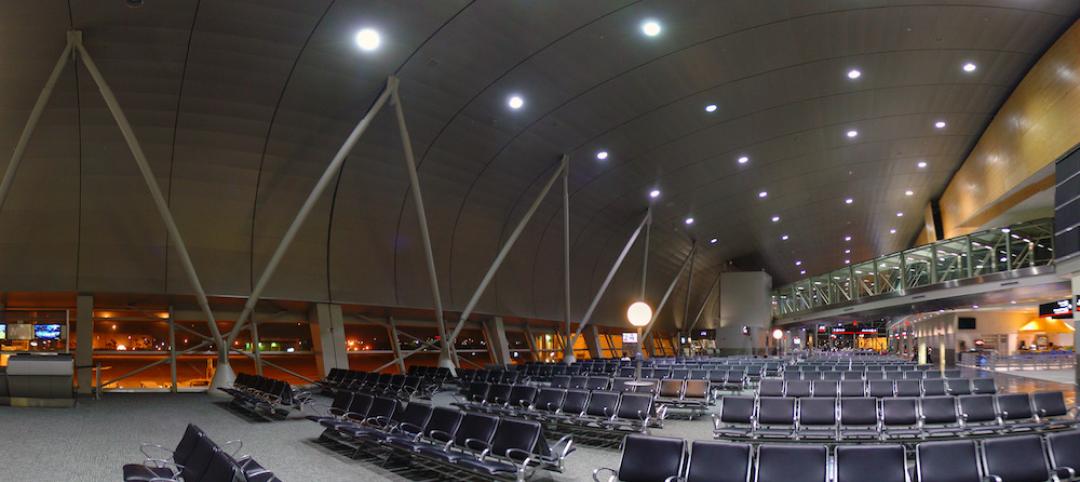The International Union of Architects (UIA), representing approximately 2.3 million architects worldwide through 124 national member sections, has unanimously adopted the 2050 Imperative committing to environmental and social sustainability.
The historic declaration, presented on August 8th at the UIA World Congress in Durban, recognizes the urgency of the UIA and its member organizations, including the American Institute of Architects (AIA), in committing to a truly sustainable and equitable future. A delegation from the AIA, including AIA President, Helene Combs Dreiling, FAIA, supports the declaration.
“We have made great strides towards a sustainable built environment, but we still need to advance the industry to make sustainable design the de facto standard for all construction projects,” said AIA President, Helene Combs Dreiling, FAIA. “Sustainable design practices implemented by the world’s architects will mitigate climate change and ultimately save lives.”
Urban areas are responsible for over 70 percent of global energy consumption and CO2 emissions, mostly from buildings, and over the next two decades an area roughly equal to 60 percent of the world’s total building stock is projected to be built and rebuilt in urban areas. This provides an unprecedented opportunity to reduce fossil fuel CO2 emissions by setting the global building sector on a path to phase out CO2 emissions by 2050, the declaration stated:
“Our responsibility is to influence ethical and socially responsible development throughout the world: to plan and design sustainable, resilient, carbon-neutral and healthy built environments that protect and enhance natural resources and wildlife habitats, provide clean air and water, generate on-site renewable energy, and advance more livable buildings and communities.”
By adopting the 2050 Imperative, member organizations have committed to advocacy and promotion pertaining to planning and design of carbon neutral cities, towns, urban developments and new buildings; engaging in research and setting targets towards meeting the 2050 goal and developing and delivering equitable access to the information and tools to deliver these objectives.
The full declaration is available to view here.
Related Stories
| Aug 3, 2016
GREEN BUILDING GIANTS: Sustainability leaders turn to wellness and technology to get an edge
AEC leaders in green building are stepping up to a higher level of innovation and to be a green leader today, you have to dig deeper into data.
| Aug 2, 2016
Top 130 Green Building Architecture Firms
Gensler, Stantec, and HOK top Building Design+Construction’s annual ranking of the nation’s largest green building sector architecture and A/E firms, as reported in the 2016 Giants 300 Report.
Architects | Aug 2, 2016
Bradley Lukanic named CannonDesign's CEO
In his new role, Lukanic takes helm of an experienced leadership team crafting and achieving optimal short- and long-term strategies and business outcomes
| Aug 1, 2016
K-12 SCHOOL GIANTS: In a new era of K-12 education, flexibility is crucial to design
Space flexibility is critical to classroom design. Spaces have to be adaptable, even allowing for drastic changes such as a doubling of classroom size.
| Jul 29, 2016
AIRPORT FACILITIES GIANTS: Airports binge on construction during busy year for travel
Terminal construction will grow by nearly $1 billion this year, and it will keep increasing. Airports are expanding and modernizing their facilities to keep passengers moving.
| Jul 29, 2016
Top 35 Airport Terminal Architecture and A/E Firms
Corgan, HOK, and Gensler top Building Design+Construction’s annual ranking of the nation’s largest airport terminal architecture and A/E firms, as reported in the 2016 Giants 300 Report.
Architects | Jul 28, 2016
Connecting the dots: Architecture and design in a changing world
What do Tesla, Airbnb and Amazon have in common? They’re all shifting the paradigm for quality of life and the built environment, as CallisonRTKL senior associate VP Jayson Lee explains.
| Jul 26, 2016
ENGINEERING GIANTS: Firms continue to push innovation
Trends include 3D printing, modular hospitals, and fluid dampers.
| Jul 26, 2016
Top 80 Architecture/Engineering firms
Stantec, HOK, and Callison RTKL once again top Building Design+Construction's 2016 ranking of the largest architecture/engineering firms in the United States.
| Jul 25, 2016
Top 35 Engineering/Architecture Firms
AECOM, Jacobs, and Thornton Tomasetti head Building Design+Construction's 2016 ranking of the largest engineering/architecture firms in the United States.

















